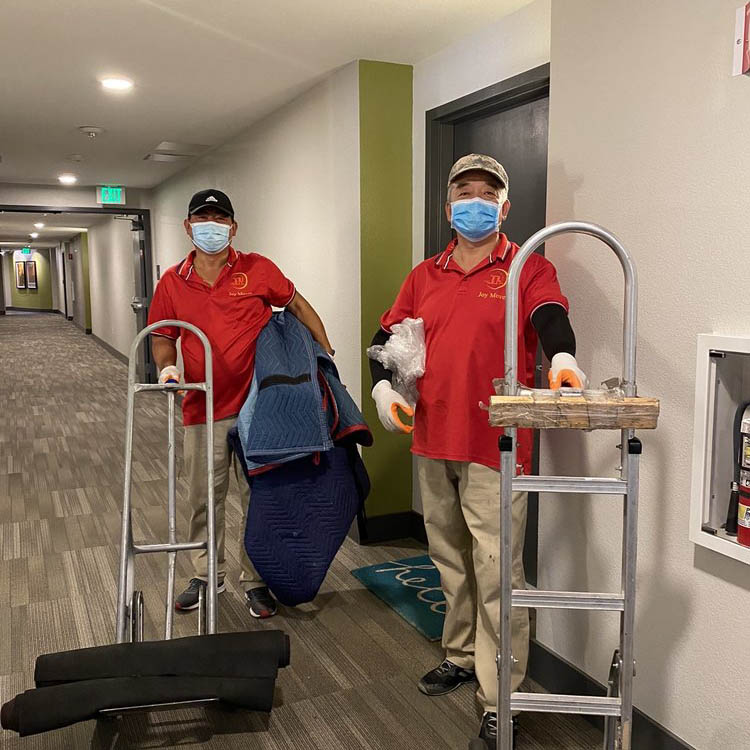What Are the Key Steps to Ensure a Smooth Office Relocation?
2024-12-21
Relocating an office can be a complex and stressful task, but it’s often necessary for growing businesses. Whether you're expanding into a larger space, moving to a more strategic location, or optimizing your workspace, office relocation can be a major undertaking. But how can you ensure that the move goes smoothly and with minimal disruption to your team? Let’s dive into the key steps that will make your office relocation process as efficient and stress-free as possible.
1. Plan Early and Set a Timeline
The first and most important step in any office relocation is to start planning early. Relocation is not something you can do overnight, and rushing the process can lead to mistakes and disruptions. Ideally, you should begin planning at least 3-6 months before the move.
This gives you ample time to coordinate all aspects of the move, including finding a new space, organizing logistics, and addressing potential challenges. Create a detailed timeline that includes key milestones like finalizing the new office space, hiring movers, packing, and setting up the new location. This will help ensure everything happens on time and according to plan.
2. Communicate with Your Team
Effective communication is vital to ensure a smooth transition during the office move. Keep your employees informed from the start and update them regularly throughout the process. This helps to alleviate any concerns and ensures that everyone is on the same page regarding the move’s timeline and expectations.
You may also want to assign specific roles or responsibilities to different team members. This could involve organizing packing, coordinating with movers, or setting up the new office space. Having a designated relocation team can help streamline the process and ensure all tasks are completed efficiently.
3. Hire Professional Movers and Technicians
While it may be tempting to handle the move with your in-house team, it’s often best to hire professional movers who specialize in office relocations. These experts are trained to safely and efficiently handle office furniture, equipment, and documents, ensuring that everything is transported without damage.
In addition to movers, you may need to hire technicians to handle the disconnection and reconnection of your technology systems, such as computers, servers, and phones. These specialists can ensure that all your tech setups are properly transported and functioning in the new office, minimizing downtime.
4. Organize Packing and Labeling
Packing for an office move can be a daunting task, but with proper organization, it doesn’t have to be overwhelming. Start by sorting and decluttering your office. Get rid of items that are no longer needed or are outdated, such as old paperwork, furniture, or electronics. This reduces the amount of stuff that needs to be moved, saving both time and money.
When packing, ensure that everything is properly labeled. Use color-coded labels or a numbering system for each department, so that items are unpacked and placed in the correct area at the new office. Clearly mark fragile items, electronics, and important documents to ensure they receive special attention during the move.
5. Set Up Your New Office Efficiently
Once you arrive at your new office, don’t rush to unpack everything at once. Start by setting up the essential areas like workstations, IT equipment, and meeting rooms. Make sure the office layout is functional and conducive to your team’s workflow.
Consider ergonomic design and employee comfort when arranging furniture. Ensure that all technology, including computers, printers, and phones, is set up and tested before employees return to work. Providing employees with a clear and organized space will help them settle in quickly and get back to work with minimal disruption.
6. Address Employee Needs and Well-Being
During the relocation process, it’s important to prioritize employee well-being. Moving offices can be stressful, so consider offering support to help employees adjust. Provide clear instructions on how to navigate the new office, and address any questions or concerns they may have.
It’s also helpful to plan for a smooth transition by having ample break areas, comfortable workstations, and even a small welcome event to celebrate the new space. Making your team feel comfortable and supported in their new environment will improve morale and productivity.
Final Thoughts
An office relocation can be a challenging process, but with careful planning and organization, it doesn’t have to be a nightmare. By starting early, communicating with your team, hiring professionals, and organizing the move, you can ensure a smooth and efficient transition to your new office space.
Are you planning an office relocation soon? What steps are you taking to make the move as stress-free as possible? Share your experiences and tips in the comments below!



